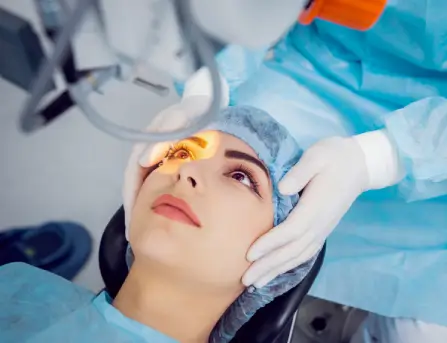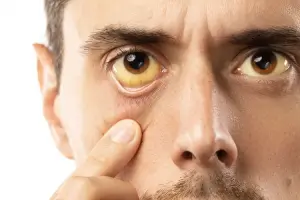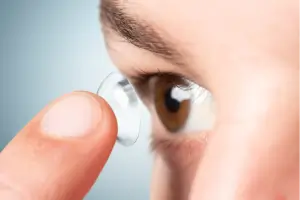





Cataract, a prevalent eye condition, typically manifests as clouding of the eye's natural lens, leading to blurred vision and potentially resulting in vision loss if left untreated.
Commonly associated with aging, cataracts can also develop due to injuries, genetic factors, or other health issues. At Dr. Gadgil Eye Hospital & Lasik Laser Centre, we specialize in advanced cataract treatment surgery.
Modern tools are available at our premises, and we take pride in having Dr. Uday Gadgil, an expert with over 30 years of experience in eye care, leading our team. It is essential to detect the signs of a cataract in order to take prompt action. Among other things, blurry or dull vision and trouble seeing at night are common symptoms of these conditions. At Dr. Gadgil Eye Hospital, we utilize phacoemulsification, a sophisticated and gentle approach to cataract surgery. Using ultrasonic energy, this technique safely removes the clouded lens to restore eyesight. Our cataract procedure is designed to be quick, painless, and efficient, minimizing discomfort and recovery time.

Our cataract surgery aims to lessen your reliance on glasses in addition to improving your eyesight. A great many of our patients report a noticeable improvement in their vision, frequently being able to see the world clearly again without the need for corrective glasses.
At Dr. Gadgil Eye Hospital in Thane, we provide the most advanced technology in eye care, including TECNIS Symfony and Synergy intraocular lenses (IOLs). Come experience our unmatched presbyopia therapy. These ground-breaking IOLs go beyond conventional multifocal lenses thanks to the use of Extended Depth of Focus Technology in their construction. This improvement greatly increases your depth of focus by offering a continuous and expanded focal point.
The capacity of TECNIS Symfony and Synergy IOLs to provide good vision across a wide range of distances is one of its most appealing features. These lenses provide maximum clarity for everything from the complexities of reading a book to the convenience of utilizing modern gadgets to viewing far-off vistas. With this function, you may be able to do away with your regular glasses usage and position them as an excellent vision correction solution.
Setting the TECNIS Symfony and Synergy IOLs apart is their seamless transition between focal lengths. This integration into your visual experience is smooth and natural, markedly reducing the disturbances often associated with Multifocal Lens Alternatives, such as glare and halos.


At Dr. Gadgil Eye Hospital, a renowned name in the Gadgil Eye Clinic Thane circle, we blend affordability with cutting-edge technology. Our dedicated team specializes in providing personalized care tailored to your visual health needs. Trust us for a holistic and streamlined journey towards crystal-clear vision, free from the constraints of glasses.
With TECNIS Symfony and Synergy IOLs, step into a future where your vision is clear, comfortable, and unrestricted. These lenses are not just a part of our advanced treatment options but are a testament to our commitment to bringing the best of eye care to you. Choose Dr. Gadgil Eye Hospital for a cutting-edge treatment to your presbyopia and unmatched clarity in seeing the world, choose Dr. Gadgil Eye Hospital.
What Are The Early Signs Of Cataract?
A Person May Have Cataract If Found The Signs Like.

Blurry Vision

Light and Glare Sensitivity

Brown or Yellowish Eyes

Difficulty Seeing at Night

Faded Colours and Hazy Objects

Difficulty Reading

Double Vision or Diplopia

Changing Contact Lenses or Glasses Frequently
Formation of Cataract
Cataracts can develop when the proteins in your eye's lens group together, causing cloudiness,
Your eye lens is generally transparent, allowing light to flow through it. To help you see clearly, the lens helps concentrate light onto your retina, which is the tissue layer at the back of your eye that is sensitive to light.
Your lens's protein clumps prevent light from freely passing through, which is why cataracts impair your vision. The protein clumps develop thicker and larger over time, making it more difficult for you to see. You may also notice a yellow or brown tint to your lens, which will affect the color perception.
What causes cataracts?
The proteins in your eye's lens gradually begin to deteriorate beyond the age of 40. These alterations in nature are the main cause of cataracts.
Several additional variables that increase the risk of cataracts, such as:
A family history of cataracts.
Diabetes.
A serious eye injury.
Eye surgery to treat glaucoma or another eye condition.
Taking steroids- medicines used to treat some health problems, like arthritis or allergies.
Radiation treatment for cancer or other diseases.
Smoking.
Drinking too much alcohol.
Spending too much time in the sun, especially without sunglasses.
What causes cataracts to form quickly?
Smokers and those on long-term steroid dosages (for asthma, for example) are more vulnerable. A cataract can be brought on by or made worse by trauma, internal ocular inflammation, certain blood chemistry problems, and certain medications.
What deficiency causes cataracts?
It has been suggested that people who consume less antioxidant-rich fruits and vegetables and those with low blood antioxidant levels are more susceptible to cataract development. The antioxidant glutathione, which plays a major role in the eyes, has to be protected by vitamins B2 and B3. Vitamin B2 deficiency has been associated to cataracts.
Types of Cataracts
There are 5 main types of cataracts.
1. Age-related Cataracts
Age-related changes in the lens of your eye can lead to the development of cataracts. This is the most prevalent kind of cataract. Age-related cataract development may be more likely if you:
Smoke
Drink too much alcohol
Have a family history of cataracts
Have diabetes
Have had certain eye surgeries, like glaucoma surgery
Take steroids - medicines used to treat some health problems, like arthritis or allergies
2. Traumatic Cataracts
Severe eye trauma can harm your lens and result in cataract development. The cataract may develop quickly following the injury or it may take years for it to manifest.
3. Radiation cataracts
Cataracts can develop as a result of some radiation types. This covers radiation therapy for cancer as well as ultraviolet (UV) rays from the sun.
4. Pediatric Cataracts
Cataracts can also affect children. Congenital cataracts are cataracts that develop later in life, or they can occur at birth.
Children's cataracts are uncommon and typically hereditary, meaning they run in families. They can also happen because of serious problems during pregnancy or because of illnesses during childhood, like uveitis or tumors in the eye. The same factors that cause cataracts in adults can also cause them in children, such as radiation, steroids, or eye injuries.
Children who have cataracts that are large enough to impair their vision require immediate medical attention. Early treatment of these cataracts is crucial to prevent further visual issues in your child, such as amblyopia (lazy eye).
There are pediatric cataracts that are so tiny they won't impair your child's vision. The eye specialist treating your child can monitor these smaller cataracts over time to make sure they don't impair vision.
5. Secondary cataracts
Following cataract surgery, the eye may develop scar tissue, which could cloud your vision once more. We refer to this as a secondary cataract. It is also referred to as posterior capsule opacification or after-cataract. Cataracts that develop later are frequent. In actuality, a secondary cataract can develop in as many as 2 out of every 5 patients who undergo cataract surgery.
Secondary cataracts can be treated quickly and painlessly. A procedure known as a YAG laser capsulotomy will be performed by your eye doctor to create an opening in the cloudy portion of the lens using a laser. In a few days, the majority of people will notice that their vision is normal again.
Pre and Post Procedure for Cataract Surgery
Before Surgery:
To choose the ideal focusing power for your IOL, your surgeon will measure your eye. You'll also be questioned regarding any medications you take. Some of these medications may require you to stop taking them before surgery.
Before the procedure, you might be prescribed eye drops. These medications assist in lowering swelling both during and after surgery and preventing infection.
The Day of Surgery:
You might be asked by your ophthalmologist to wait at least six hours before surgery before consuming any solid food.
A hospital or an outpatient surgery center may perform cataract removal surgery. This is what is going to occur:
An injection or eye drops will be used to numb the area around your eye. In order to help you relax, medication may also be administered.
Throughout the procedure, you will be awake. During the procedure, you might see movement and light, but you won't be able to see what the doctor is doing to your eye.
The surgeon uses a specialized microscope to view the area. They make tiny incisions (cuts) close to the edge of your cornea using a blade or a laser. These incisions allow the surgeon to access your eye's lens. They will remove the cataract by breaking up the lens with tiny instruments. After that, they implant new lenses.
The incisions won't usually need to be sewn shut by your surgeon. With time, these "self-sealing" wounds will heal on their own. Your eye will be shielded during the healing process following surgery.
You will spend 15 to 30 minutes sleeping in a recovery area. You'll then be prepared to return home.
How Long Does It Take To Recover From Cataract Surgery?
Days or weeks after surgery
You may have to use eye drops after surgery. Be sure to follow your doctor’s directions for using these drops.
Eye drops are required post the surgery. Make sure you use these drops according to your doctor's instructions.
Take care not letting water or soap in your eyes.
Avoid pressing or rubbing your eye. To protect your eyes, your ophthalmologist might advise you to wear a shield or eyeglasses.
When you sleep, you must wear an eye shield for protection.
Your ophthalmologist will discuss with you the extent of your immediate post-operative activity. When you can resume driving, working out, and other activities safely will be communicated to you.
At Dr. Gadgil Eye Hospital & Lasik Laser Center, Thane, our mission is to provide exceptional eye care services that not only restore vision but also enhance the quality of life for our patients. We take pride in the positive impact our treatments and services have had on countless individuals. Here are some heartfelt testimonials from patients whose lives have been transformed by our dedicated team of professionals.
Cataract Surgery Costs/ Insurance
If you qualify for Medicare, the costs of cataract surgery are typically covered. Cataract surgeries are also covered by private insurance.
If your vision tests at a certain level of clarity or acuity, Medicare will pay for your care. Similar vision requirements may apply to private insurance plans. Even if your surgery is covered, there might be some additional costs. IOLs of special types will cost more. It will be more expensive to decide to have cataract surgery before your vision has become significantly worse.
It may be possible in some circumstances to obtain coverage prior to meeting the age or vision requirements. See your ophthalmologist if you're thinking about undergoing early cataract surgery.
TPA / INSURANCE

bajaj allianz health insurance

aditya birla health insurance

acko general insurance

E Meditek Tpa Services Ltd

HDFC ERGO General Insurance Company

Heritage Insurance

icici lombard health insurance

IFFCO TOKIO

medi assist insurance tpa pvt ltd

Medsave Healthcare

The Oriental Insurance Company

Paramount Health Insurance

Reliance General Insurance

SBI General Insurance

Star Health

The New India Insurance

Vidal Health Insurance

care health insurance

Ericson Insurance TPA Pvt. Ltd

FHPL

Good Health TPA

Health India

Health Insurance (HI)

Md India

National Insurance

Park Mediclaim

Raksha

Safeway

United Health Care

United India Insurance

East West Tpa
Government Schemes

Naval Dockyard

CSMA

CGHS